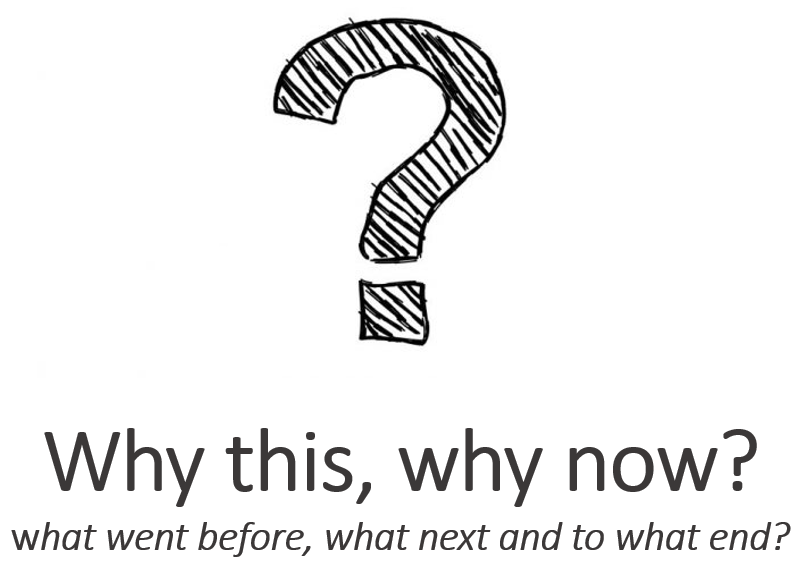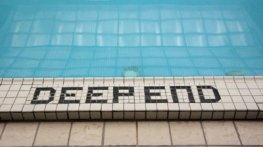“Of course, poverty isn’t the only way in which people get overlooked by society; there are many ways that the world has of saying, “you don’t belong here.” … I wanted to say, “yes, you DO belong. We all belong here.” (Tom Percival, 2022, from “The Invisible”)
Our world is getting darker. In the enveloping gloom, individual children are becoming invisible, trapped by circumstance. We urgently need to wield our collective power and throw light on those who are fading. If we choose to work in education, and we do, then we also choose to make a difference to the lives of all children. And if it is about all children then we are compelled, through our shared duty of care, to tackle the eye-watering and widening inequality. Together we must secure far greater equity through education, giving individuals what they specifically need and seeking to close the growing chasm between those that have and those that have not.
It is already too dark, for too many: the cost-of-living crisis, fuel, inflation, pandemic, political uncertainty, instability, conflict, the education system… has disenfranchised and exacerbated hopelessness. Everywhere you look in education the gap is widening. Whilst advantaged children and families have some (much) immunity, the world is forcing disadvantaged children and families to re-prioritise and step further back. This is cumulatively, and seemingly irreversibly, eroding status, belonging and undermining esteem.
Over 4 million children, and rising, are growing up in poverty. Everywhere, families are struggling to meet their basic needs, forcing education and wider experiences to be inaccessible, unaffordable (in time and money). Securing the basic needs overwhelms, gradually removing the colour and slowly, intractably dissolving individuals who are ever more invisible in our world; hidden in plain sight.
”(Our) focus on (eye)sight means that we often are at a loss on how to deal with things that are invisible… and it works against us when it’s … invisible over time (like disadvantage). When there’s a conflict between what we know and what we see, we often default to the wrong one.” (Seth Godin)
As educators, we are, for many children, the only second chance, but we are evidently not yet meeting that challenge. There is a heartbreakingly large number of individuals fading within our society and in our schools. But it is not hopeless, we should take heart, because we have what we need. We can create the conditions that offer hope, build status, esteem and agency; empowering children to become more visible. Ensuring that those experiencing disadvantage, are given the opportunities and experiences to be the masters of their fate and captains of their soul. (William Henley)
Together we are obligated to tackle this invisibility and empower the marginalised, at a time when we are also distracted by these darkening times. Our collective endeavour, is to use education to illuminate and bring more colour, to more lives. It is through our leadership and in teams, that we can unswervingly focus on our best levers, teaching and culture to bring light to this darkness and to say, “yes, you do belong.”
The following explores the key bets for securing greater equity through education for presently disadvantaged children. Whilst far from exhaustive, they seek to stop children from fading and becoming invisible.
This builds on What if we are the hope? | Closing the gap curriculum as the lever
Disadvantage even over… attendance first (culture)
“One measure of poverty is how little you have. Another is how difficult you find it to take advantage of what others try to give you.” (Michael Lewis)
One way to guarantee the invisibility is to accept poor attendance, everyday a disadvantaged learner is not in school the gap grows. It takes a whole school to improve attendance, because it is a team sport, with an individual focus. Seeking preventative strategies based on really knowing our individual children and families, as well as our responsive actions, reaches out and encourages/expects attendance. We must commit to persistently and insistently working to remove barriers to attendance. So that we, meet them there, apply equity, ensure that they are pushed and pulled to school, resisting the forces that encourage retreat.
It is not good enough to just have good provision, we must support individuals to be present, visible and to take advantage. This is, of course, tightly linked to the quality of education, no one actively misses high quality provision, or the best party in town. Disadvantage attendance is the one measure that can be chased and improved every day; and every day counts when we tackle invisibility.
Measure what we care about (Leadership)
“You should measure things you care about. If you’re not measuring, you don’t care and you don’t know.” (Steve Howard)
Not measuring what matters adds another layer of invisibility. Measuring what matters focuses our accountability systems and our attention towards enacting the level and depth of equity required to make a difference. Giving permission and incentivising colleagues to chase what is worth having; giving children what they specifically, individually need.
“This is Vanity Fair a world where everyone is striving for what is not worth having.” (William Thackery)
The early advantage, linguistic privilege and supported opportunity that advantaged children enjoy, accumulates success, regardless and sometimes in spite of school. With less early advantage, disadvantaged learners need schools to be excellent, only then will provision reach and achieve the equity required to accumulate advantage. It is the attainment of disadvantaged learners, even over, that is the best measure of the effectiveness of provision. How far a school or Trust achieves attainment mobility and closes gaps to be in line with advantaged learners is the barometer of the quality of provision.
“Making good use of school time is the single most egalitarian function the schools perform, because for disadvantaged children, school time is the only academic learning time, whereas advantaged students can learn a lot outside of school.” (Hirsch)
Keeping the Main Thing the Main Thing (Teaching)
“Teaching quality is important. It is arguably the greatest lever at our disposal for improving the life chances of the young people in our care, particularly for those from disadvantaged backgrounds.” (Peps McCrea, 2016)
The quality of education, particularly teaching, and the culture of schools are the main things for securing equity and growing great humans, with the agency needed to exploit their future. This is the bet, consistently applied, over the 12,000 lessons and the 15,000 hours they are in school (age 4 to 16), that will reverse delayed attainment, linguistic under-privilege and accumulate advantage.
Disadvantage learners disproportionately thrive when teaching is strong. When it is weak, advantaged learners still make sense of it, whilst disadvantage learners fall even further behind. When teaching is purposeful, precise and where language and explanation includes and does not exclude learners, disadvantage learners make more progress. Where expectations remain high and where we scaffold to fill gaps in understanding, spiralling and bouncing back and forth in the curriculum we secure a narrative that has the footholds, ropes and ladders for disadvantaged learners. We need to avoid presumptions of language, background knowledge and self-efficacy (Marc Rowland). Of course, disadvantage learners really need us to follow learning to meet need, to explain clearly and well, model expertly and to engage in explanation; making learning explicit, coherent and accessible.
Viewing teaching through the disadvantaged lens forces us to really explore, know and understand where learners are, find out what they know, what they don’t know and teach the next bit (Asubel). Whilst knowledge is power, it is understanding and application of knowledge that is king. The mind best understands facts when they are woven into a conceptual fabric, such as a narrative, mental map, or intuitive theory. Disconnected facts in the mind are like unlinked pages on the Web: they might as well not exist (Stephen Pinker). Teaching that deeply understands subject, the substantive concepts, its architecture, offers the best route map for disadvantage learners; it weaves nets.
Weaving curriculum nets (Teaching)
Decisions about what knowledge to teach is an exercise of power and therefore a weighty ethical responsibility. What we choose to teach confers or denies power (Christine Counsell). There is nothing more important for disadvantaged learners than a well sequenced, conceptually coherent curriculum that efficiently, and intentionally enacts the best of what has been thought and said. If the curriculum is overloaded, disconnected, full of arbitrary knowledge we will not be weaving conceptual nets and much will slip through as unresolved cognitive conflict. It is the progressive and precise sequence, coherence and clarity that disadvantaged learners really need.
When we teach out of sequence, disadvantage learners assume that they do not understand, and this encourages further retreat and desk top truancy. Really, deeply thinking about why this, why now is so important – we often seek to cover too much, to move on too quickly and to be activity/task driven, instead of securing the conceptual spine that, once in place, will hold and accelerate future learning. Disadvantage learners need us to really know our subject and the progression, they neither have the time or the wider schema to make sense and find their way through the arbitrary or the ill-sequenced. Curriculum is arguably the most important lever that we have, it is further developed here: Closing the gap curriculum as the lever
Vocabulary | give the keys of language (Teaching)
“Education is the process of preparing us for the big world and the big world has big words. The more big words I know, the better I will survive in it. Because there are hundreds of thousands of big words in English, I cannot learn them all. But this does not mean that I shouldn’t try to learn some.” (David Crystal)
Big words, for a big world. Vocabulary gifts the keys of language, the basis for deeper understanding, but even more importantly gives access to culture, enfranchises and privileges learners. Being vocabulary-poor disenfranchises and excludes, it takes the colour away. Teaching (exploring, marvelling at) words in context, in subjects, connected to big ideas and concepts makes children feel clever, builds esteem and, most importantly, the words are stickier in schema.
“The large amount of school time spent in direct word study is not being spent on systemically becoming familiar with new knowledge domains, where word learning occurs naturally, and up to four times faster, without effort.” (Hirsch, 2017)
It is a feature of growing up in an advantaged home that words become jewels in conversations. And it is the etymology and structure of words that really intrigue and make individuals feel clever. Gifting a wealth of words to children, unlocks doors into the past, into interesting places and times, uncovering provenance, quirky connections and ; Joy filled learning.
By paying attention to vocabulary growth at the micro level, we can better understand it, we can go to cultivating it and in so doing every child will be gifted a wealth of words.” (Alex Quigley, 2018)
Oracy | valuing everyone’s voice (Teaching)
“It may seem an obvious thing to say, but one of the best things we can do with young children is to have interesting and enjoyable conversations with them.” (Michael Rosen)
Oracy exposes language, vocabulary, thought, cultural capital and understanding to all. Our sentences and words open the window to our understanding and how individuals navigate the world. Disadvantaged learners need full immersion in rich conversation, be given permission to listen, encouragement to be heard and the safety to articulate understanding out loud. In doing so they fire the connections, build word wealth and secure schema that grows confidence, cognition and enables musing and exploration. It is why we should be picky on full response, why we should provoke and encourage discussion and debate. It is also on this sea of talk that great writing happens. We need to articulate our ideas and thoughts, our opinions and cogitations to bring colour to learning, to revel in thinking and for individuals to find their voice.
“If we are truly committed to empowering every young person regardless of their background, with the belief that their voice has value and the ability to articulate their thoughts so others will listen, then it is time to get talking in class.” (Beccy Earnshaw)
Reading | opening eyes to multiple worlds (Teaching)
“The more that you read, the more things you will know. The more that you learn, the more places you’ll go.” (Dr Seuss)
Reading and the development of reading is fundamental for accumulating advantage. It is hard to over-state the importance of reading: it develops cultural capital, comprehension, vocabulary, thinking, empathy, inference, confidence, concentration, oracy, writing, esteem… all the ingredients required to achieve attainment mobility. Alex Quigley offers this helpful summary on developing reading:
- Start with careful planning a broad and balanced curriculum that brings a world of knowledge alive.
- Ensure pupils do lots and lots of reading of challenging texts.
- Support pupils to develop, connect and cohere their knowledge.
- Give pupils targeted, text sensitive support to deploy reading comprehension strategies, with a gradual release of responsibility.
- Avoid over-practising comprehension assessments that can compromise curriculum time for read extended texts. (Alex Quigley, 2022)
More than any other subject, English – and especially reading – gives pupils access to the rest of the curriculum and is fundamental to their educational success. (Ofsted, English Research Review, 2022)
Hunt don’t fish (Teaching)
“Fair doesn’t mean giving every child the same thing, it means giving every child what they need.” (Rick Lavoie)
We are pre-programmed in education to seek equality, which in most areas of life is essential. But disadvantaged learners need more than equality, they need equity, they need what they need, not what everyone needs. This ensures that we privilege and prioritise the needs of disadvantage learners – to know exactly where they are and give them what they need – and to do that we need to hunt not fish. To fish is to cast the net and do the same for all (privileging advantaged) to hunt is to seek to meet the individual needs (privileging disadvantage).
Advantaged childhood; one of high-demand and expectations (Culture)
Sit up at the table, elbows, don’t talk with your mouth full, use the right tense, sit up, can you rephrase that, do you know where that word comes from, you know that links to this and what we saw there, finish all of that, put you knife and fork together, dry-up, put away, finish your homework, when is your tutoring, tidy your room, what time is training? have you got your violin out for tomorrow? do you need a new reading book? what time do I pick you up from rehearsal? we are going to the theatre on Saturday after hockey, have you applied for that part time job?….
To grow up advantaged, is to experience the constant drip of expectation, self-fulfilling and accumulating advantage over time. The shaping, informing, correcting, pickiness, opportunity laden, supported experiences add up to add advantage that presents to adults as innate ability, even talent. Those experiencing disadvantage (only an economic label) have had fewer opportunities, less education and guided experiences, which slows progress, accumulates disadvantage and presents as less able (less talented) and once this sets-in, it holds on through life. This perpetuates the opposite of a virtuous circle, a vicious circle, where we consistently over time (perhaps subconsciously) expect less of those with delayed attainment and increase the gap. Disadvantage is a process (born out of circumstance(s)), it is not an event (Marc Rowland).
Our job is not to collude with circumstance, but to maintain high expectations, understanding that if we let them off, we let them down. We must avoid deficit discourse, assumptions of innate talent and loose language that reinforces, often unintentionally, disadvantage. When we see delayed attainment, we acknowledge that nothing fundamental can stop attainment mobility or the closing of gaps, except, of course, if we fail to advantage those presently experiencing disadvantage.
Give Status (Culture)
“It is difficult for us to realise how much information is socially transmitted, because the amount is staggering and the process is largely transparent.” (Pascal Boyer, 2018)
As individuals, we have an un-ending well of status to give to colleagues and to children. The opportunity to give status is a fundamental human gift to others. To give status is to be interested in every child, who they are, what they are doing, smiling, acknowledging, encouraging, noticing, being present. It costs us nothing, is a measure of our shared values and plays out in every interaction.
“…feeling deprived of status is a major source of anxiety and depression. When life is a game we’re losing, we hurt. …status is a resource as real as oxygen or water. When we lose it, we break.” (Will Storr, 2021)
Given that we measure our status against those with whom we spend time, our classrooms are crucibles of comparative status. Our classroom cultures must level status upwards and not inadvertently reinforce disadvantage or status based on early advantage and current attainment.
“We can’t help leaking expectations, through our gazes, our body language and our voices. My expectations about you define my attitude towards you.” (Rutger Bregman)
Build belonging, distribute esteem (Culture)
It may not appear obvious, but schools are the most trusted, resourced and the most able to tackle inequality and to combat the growing darkness in our communities. Our superpower is education and that is where we can shine the light and support children to find colour, to belong.
“To feel a sense of belonging is to feel accepted, to feel seen and to feel included by a group of people… to not feel belonging is to experience the precarious and insecure sense of an outsider.” (Owen Eastwood, 2021)
How then, do we create belonging in our language, values, artefacts, behaviours, routines in schools to say to all children that they belong. To what extent do we see the development of culture in schools as a curriculum to be taught and enacted, not left to social forces? This seeks to create an empowering and ordered culture to enable psychological safety, creating the climate to tackle disadvantage.
The development of shared language and lexicon is a purposeful activity that understands that some words, phrases and attitudes reduce status and belonging (often unconsciously). We must select, develop and reinforce an empowering language to enable individuals to belong, feel safe and be able to prioritise learning.
In this decade, with the inevitable challenges, our duty of care to the children we educate is to build their self-esteem, so that children have purpose, dignity and feel the glow of accomplishment. A marker of our success will be the extent to which we are able to distribute and redistribute esteem.
“…we need a redistribution of esteem… to live lives of decency and dignity, winning social esteem. …we can travel the road to 2045 with purpose, dignity and accomplishment.” (Peter Hennessy, 2022)
In the dark there is light (Team)
“How a society treats its most vulnerable is always the measure of its humanity.” (Matthew Rycroft)
Whilst it is darker and ever gloomier, we should remain optimistic and empowered. Those who are presently disadvantaged depend on us, we are their greatest hope, their best second chance. We do, however, need to actively choose to care, to privilege and to apply equity through education. To measure what matters, drive up attendance, focus on the main things, invest in curriculum, teaching, vocabulary, oracy, culture. To have high expectations, to give status, create belonging and systematically build esteem.
This is our duty of care, it is what matters, it is why you are here. Go forth, build a coalition, a movement within your schools, across schools and across Trusts, for communities, within our regions. A movement that seeks to bring light to those who need it, to support children who are fading, to build the colour back in and to make sure every child has a fair chance, so we can say, “yes, you DO belong. We all belong here.”
“We are bound by a sense of shared belonging and collective responsibility; about strong local communities, active citizens and the devolution of responsibility. …ensuring that everyone has a fair chance to make the most of their capacities and their lives.” (Jonathan Sacks, 2020)
Dan Nicholls | October 2022
Thinking and content heavily influenced by colleagues within Cabot Learning Federation




























































